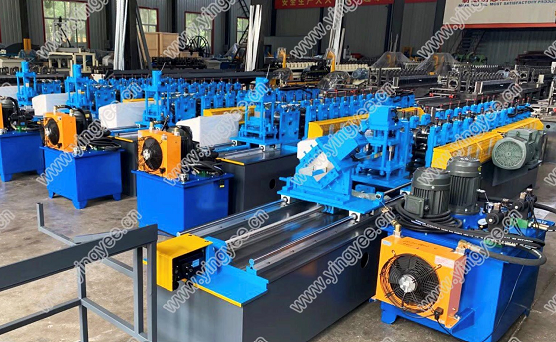
The Art and Science of Metal Curving Transforming Steel Into Sculptural Forms
Metal has long been regarded as one of the most versatile materials in production and artistry. Among various techniques used in metalworking, curving metal is a crucial process that transforms flat sheets or rods into dynamic, three-dimensional forms. This article explores the significance of metal curving, its applications in different fields, and the techniques that make this transformation possible.
Understanding Metal Curving
Metal curving refers to the process of bending and shaping metal into various forms, whether for functional purposes or artistic expression. This technique can be observed in numerous industries, including architecture, automotive manufacturing, furniture design, and public art installations.
The ability to curve metal allows designers to create intricate structures that are not only aesthetically pleasing but also structurally sound. By manipulating the metal, craftsmen can produce components that fit together seamlessly or stand alone as striking sculptures.
The Importance of Metal Curving in Architecture
In architecture, metal curving allows for innovative designs that challenge traditional straight lines and angles. Architects utilize curved steel beams, aluminum facades, and unique roofing systems to create visually stunning structures. A prime example is the Guggenheim Museum in Bilbao, Spain, designed by Frank Gehry. The building’s flowing forms and dynamic shapes are made possible thanks to advanced metal curving techniques.
Curved metal accents can also improve the structural integrity of a building. Curved shapes distribute weight more evenly than flat surfaces, leading to stronger and lighter constructs. The adaptability of metal curving enables architects to design larger spans and create open spaces, which enhances the functionality of buildings.
Applications in the Automotive Industry
The automotive industry heavily relies on metal curving to create both functional and aesthetic components
. From the structure of the chassis to the sleek contours of the exterior, curved metal plays a crucial role in car design. Modern techniques such as hydroforming and roll forming allow for precise shaping of metals, ensuring they meet safety and performance standards while also achieving desired aesthetics.Curved metal is not only a matter of beauty but also of aerodynamics. Streamlined shapes reduce air resistance, improving fuel efficiency and performance. As electric and hybrid vehicles grow in prominence, the need for innovative design and material application becomes even more critical, pushing the limits of metal curving technology.
Artistic Expression through Metal Curving

Beyond industrial applications, metal curving has emerged as a prominent form of artistic expression. Sculptors and artists utilize various techniques to create intricate sculptures that capture movement and emotion through the medium of metal. The flexibility of material allows artists to experiment with various shapes and forms, giving rise to breathtaking pieces that interact with light and space.
Artists such as David Smith and Anthony Caro have pioneered the use of metal curving in their sculptures, demonstrating how steel can be transformed into lyrical and organic forms. Their works challenge perceptions of metal as a rigid material, instead showcasing its ability to convey fluidity and grace.
Techniques for Metal Curving
Creating curvilinear forms in metal typically involves several techniques, each suited for specific applications
1. Bending This is the most straightforward method, where metal is physically bent using specialized machinery such as press brakes. This technique is commonly used to create simple curves.
2. Rolling In this method, sheets of metal are passed through rollers to achieve a curved shape. This is often used in the production of cylindrical shapes such as pipes.
3. Hydroforming Utilizing high-pressure fluid, hydroforming allows for complex shapes to be formed from metal sheets. This technique is popular in the automotive industry for creating lightweight components.
4. Forging This process involves heating metal and then shaping it using hammers or presses. Forging can create intricate details and is often used for artistic sculptures.
5. Casting Metal can also be cast into molds to achieve desired shapes, which is particularly useful for creating unique and elaborate designs.
Conclusion
The art and science of metal curving represent a beautifully intricate marriage of functionality and creativity. As industries continue to evolve and embrace new technologies, the applications of metal curving will expand, leading to more innovative designs and artistic expressions. Whether enhancing the structural integrity of a skyscraper or capturing the essence of movement in a sculpture, the curving of metal remains a testament to human creativity and ingenuity. As we explore the possibilities within this field, the future of metal curving appears both promising and inspiring.